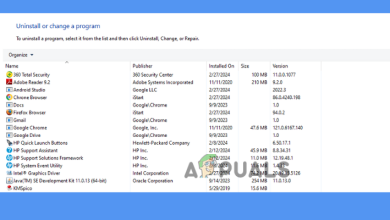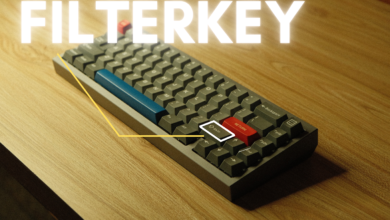How to Remove the Recently Added List from Start Menu?
In Windows 10, the newly installed applications will be listed as a Recently added section in the Start Menu. It shows up at the top left of the Start Menu. This feature displays the most recent three installed applications, but users can view more by clicking on the Expand button under it. This is a great feature that allows you to quickly launch the recently installed programs. However, if you don’t want other users to see the recently installed applications, you can remove this section. In this article, we will show you methods through which you can remove the specific applications or completely remove the list from Start Menu.

Removing Recently Added List from Start Menu
There are several methods that you can use to remove the recently added list from Start Menu. Some will let you only remove specific applications from the list and others will completely remove the list from Start Menu. Depending on the situation, you can use the one that is better for you. You can also disable the enable/disable option of this list from the Settings app by using the Group Policy Editor. However, the Group Policy Editor isn’t available in all versions of Windows, so we are also including the Registry Editor method.
Method 1: Using the Remove from the List Option
This method is for removing a specific recently added application from the Start Menu. The feature can be found by right-clicking on any of the applications in the recently added list. However, this will not stop the applications from listing under this section in the future.
- Open the Start Menu by clicking on the Start icon or simply pressing the Windows key.
- Now right-click on any of the recently added applications, choose the More option, and then click on the Remove from the list option.

Using remove from the list option - This will remove that specific application from the list. You can remove multiple by following the same steps.
Method 2: Using the Windows Settings App
There is a setting for enabling and disabling the recently added list from your start menu. The setting can easily be found in your Windows Settings app. You can change the toggle option to Off for this setting to disable the list from the Start Menu. You can also enable it back by simply changing the toggle option back to On.
- Press the Windows + I key combination on your keyboard to open the Windows Settings app. Click on the Personalization category in the Settings window.

Opening personalization in the Settings app - In the left pane, click on the Start, and now turn Off the toggle for “Show recently added apps“.

Disabling the recently added list - This will disable the list of the recently added applications from the Start Menu.
Method 3: Using the Local Group Policy Editor
Another method for disabling the recently added list is by using the policy setting in the Local Group Policy Editor. This will completely disable the list and users will be unable to enable it from the Settings app. The changes may not take effect soon, but a restart will apply the changes to your system. Follow the below steps to try it out:
- Press the Windows + R keys together to open a Run dialog. Now type “gpedit.msc” in it and press the Enter key to open the Local Group Policy Editor. If prompted by UAC (User Account Control), then click on the Yes button.

Opening the Local Group Policy Editor - In the Local Group Policy Editor window, navigate to the following path:
Computer Configuration\ Administrative Templates\ Start Menu and Taskbar\

Navigating to the policy setting - Double-click on the setting named “Remove “Recently added” list from Start Menu” and it will open up in another window. Now change the toggle option from Not Configured to Enabled.

Opening the policy setting - Finally, click on the Apply/Ok button to save the changes. This will remove the recently added list from the Start Menu.
Note: Sometimes the changes will not take effect immediately and you need to restart your computer for it to see the changes. - To enable it back, you need to change the toggle option back to Not Configured or Disabled in step 3.
Method 4: Using the Registry Editor
The alternative method for the Local Group Policy Editor is the Registry Editor method. It does the same work as the policy setting in the Group Policy Editor. If you used the Local Group Policy Editor method, then it will automatically update the key and value for this setting in the Registry Editor. However, if you are directly using this method, then you need to create the missing value for the setting to work. You can also create a backup of your registry before following the below guide to make it work:
- Press the Windows + R keys together to open a Run dialog on your system. Now type “regedit” and press the Enter key to open the Registry Editor. Also, click on the Yes button if prompted by UAC (User Account Control).

Opening the Registry Editor - In the Registry Editor window, navigate to this key path:
HKEY_LOCAL_MACHINE\Software\Policies\Microsoft\Windows\Explorer
- In the Explorer key, right-click on the right pane and choose New > DWORD (32-bit) Value. Save this value by naming it as “HideRecentlyAddedApps“.

Creating a new value - Double-click on the newly created value and change the value data to 1.

Changing value data to enable the setting - After all the changes, make sure to restart your computer to apply the changes.
- To enable the recently added list back to Start Menu, you need to change the value data of the value to 0 or simply remove the value from the Registry Editor.





